Could the mosquitoes start another deadly outbreak in the US?

Thick clouds of mosquitoes are bleeding livestock to death in several areas of Louisiana just weeks after the devastating Hurricane Laura. Storms and rainfall led to flooding creating an ideal breeding ground for the mosquitoes. The swarms of blood-thirsty insects have been taking out cattle, deer and horses. There are also reports of horses and birds being infected with mosquito-borne diseases. Now experts warn local people are at risk of being infected with West Nile virus, as the number of people needing treatment soars. What’s more troubling is the mosquito attack may be a sign of a much bigger environmental disaster.
‘Mosquito storm’
They’re vicious little suckers’ said Dr Craig Fontenot, a veterinarian of Ville Platte city who visited the recently attacked farms. He told the Associated Press thick clouds of mosquitoes spread over five parishes in early September claiming some 300-400 cattle.
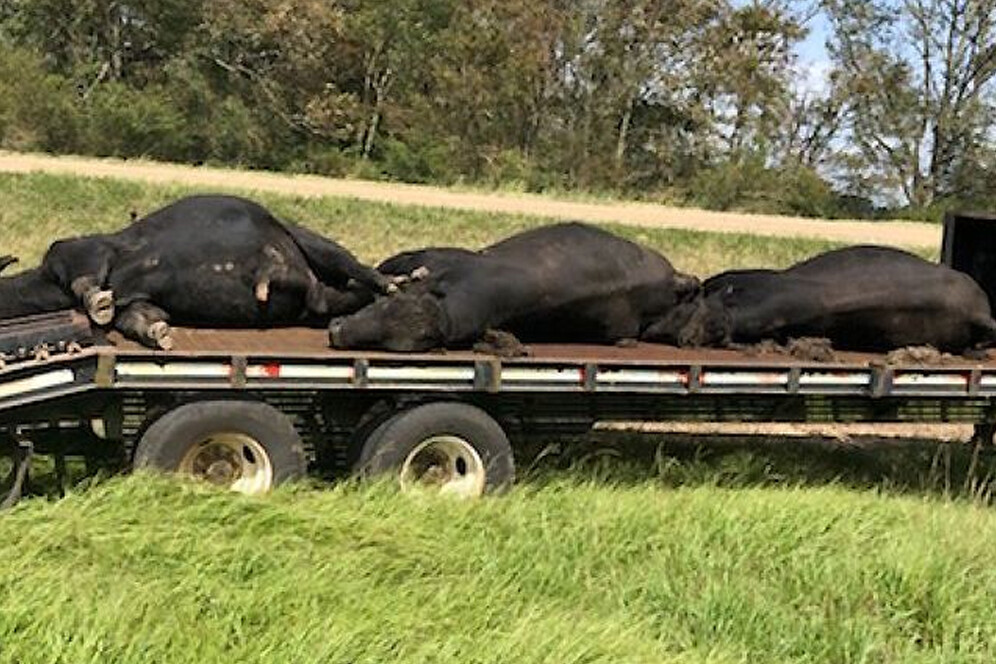
Trying to escape constant biting, the animals paced around until falling, exhausted and starving for oxygen. Many were found to have bleeding under the skin. A picture by Dr Fontenot shows a bull’s belly blanketed with mosquitoes. As farmers started spraying with repellents, the swarms seemed to decrease, but the stressed cows were reported to have spontaneous abortions. The veterinarian says only a few horses and no goats have died, as they are usually kept in stalls. However, one deer rancher told him he’d lost about 30 of his 110 animals, and it will cost him over $100,000.
“Mosquitoes are out in force right now. The hot and wet conditions exacerbated by storms such as Hurricane Laura, increase the number of mosquitoes that could be carrying diseases,” Agriculture and Forestry Commissioner Mike Strain said in a news release.
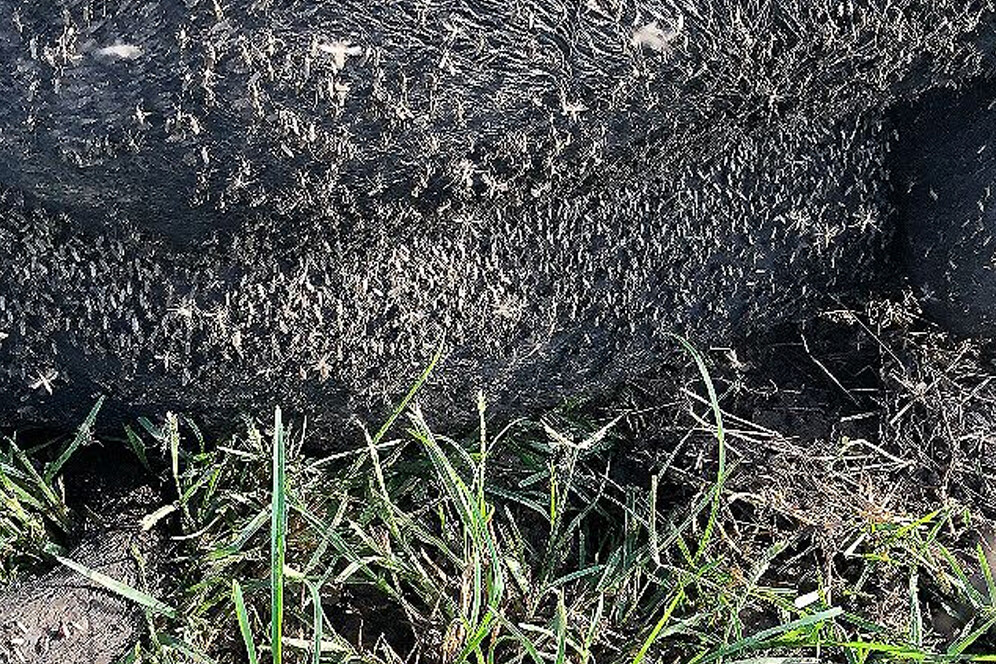
At least three horses in Louisiana have tested positive for a deadly rare brain infection Triple E (Eastern Equine Encephalitis) according to Louisiana officials. Mosquito-borne diseases such as Triple E and West Nile Virus mostly impact horses but can spread to people. Both diseases are transported by several types of mosquitoes which become infected after feeding on infected birds. For horses, a Triple E infection means a 90% probability of death.
West Nile virus appeared for the first time in 1999 in the US, killing zoo birds, horses, and humans in the New York City area. Over the next decade, it spread across all the Americas: from North America including Canada to Mexico in the South. Horses are the most likely to be infected as they represent 96.6% of non-human mammalian cases.
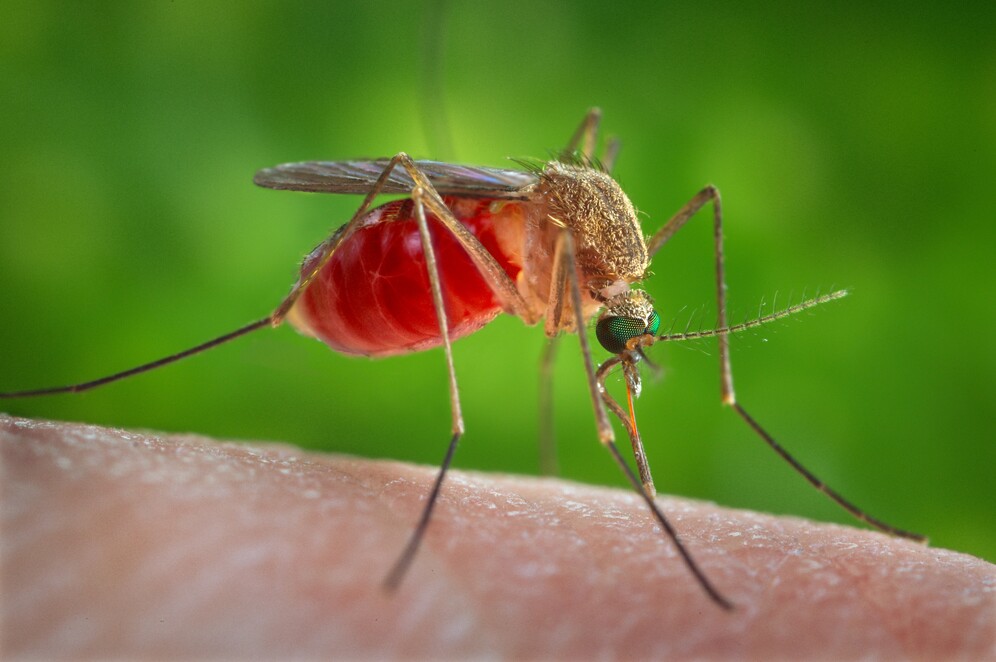
West Nile virus causes severe neurological disease, as it affects the brain and spinal cord, so the animals lose the ability to walk or develop mental problems. Despite successful vaccination, around a third of cases are fatal.
Possibility of a human outbreak
There've been no reported deaths or unprecedented growth of mosquito-borne infections among humans in Louisiana as of yet. Christine Navarre, an extension veterinarian from LSU AgCenter, suggests the mosquito boom following Hurricane Laura "shouldn't increase human diseases." She told Newsweek "the mosquito species do not transmit human diseases like West Nile very efficiently." Experts recommend precautions like long-sleeved shirts, long pants as well as repellents.
Annually, an average of 11 cases of Triple E infection is reported in the US. Triple E virus is a rare cause of brain infections (encephalitis) among humans. The Centers for Disease Control and Prevention (CDC) says in 30% of cases, infections are fatal, and survivors may develop neurological problems.
West Nile virus is much more common in the US with an average of 130 fatal cases a year. As of September 22, the CDC has reports of 174 people infected with the virus, with 124 having the neuroinvasive form of the infection, such as meningitis or encephalitis. People of all ages are susceptible. Its common symptoms include headache, vomiting, diarrhoea and fatigue.
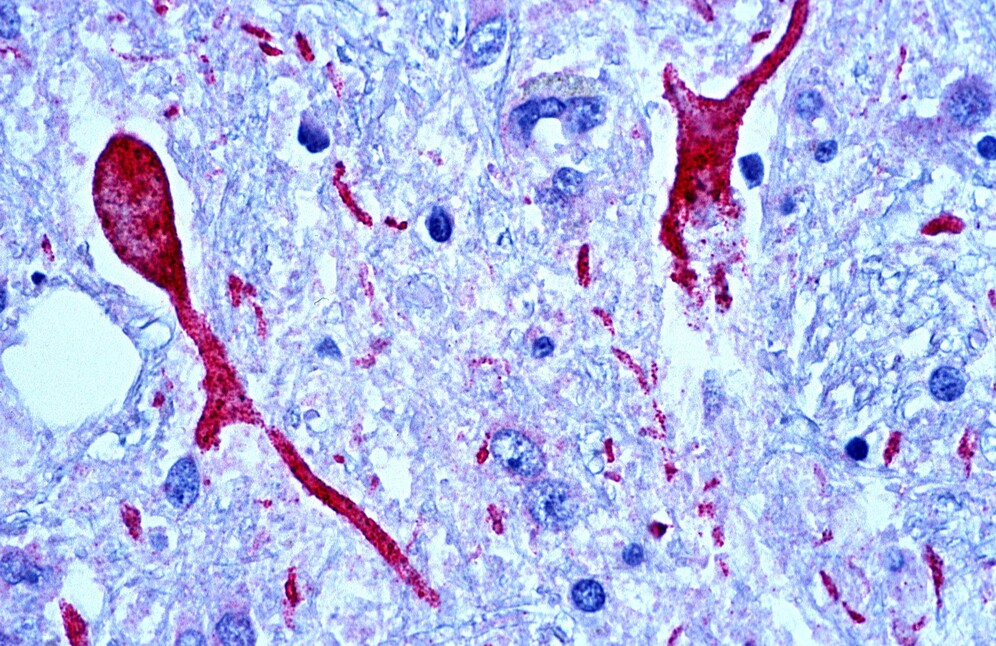
The Louisiana Department of Health has confirmed more cases of human infections with West Nile virus. Four new cases have been reported in Caddo, two in Tangipahoa Parish and one each in Bossier and St. Tammany parishes, according to Kelvin Samuel, assistant director of Caddo Animal Services.
There are three types of virus infection: asymptomatic, fever and neuroinvasive, with the latter causing severe brain damage, paralysis and even death. The majority of those infected, around 90% are usually asymptomatic, up to 20% have an influenza-like illness. A minority of people, mostly older than 65, develop a neurological disease like aseptic meningitis or encephalitis.
The World Health Organization has also addressed the question of whether mosquitoes could spread COVID-19. There is no information on whether mosquitoes can transport coronavirus.
What worries doctors is the symptoms of the two infections are similar, making it harder to diagnose and therefore losing time. "What we don’t want is someone to have been exposed to COVID-19 and West Nile because that could lead to something detrimental," says Rider.

Mosquito boom and Climate Change
Climate change may lead to an increase of mosquito-borne infections in the US, according to a new study, published in the eLife journal. It suggests “we might expect a net increase in transmission of West Nile virus in response to the warming climate, even as hot temperatures suppress transmission in some places.” Polar ice melting created hurricanes may cause more flooding, which is a perfect environment for mosquitoes. Typically, hurricanes may be followed by outbreaks of mosquito-borne diseases. In 2005 swarms of mosquitoes were reported in Louisiana after rainfall caused by Hurricane Katrina, and in 2017 after Hurricane Harvey in Texas.
Fighting mosquito-borne infections throughout the US history

Mosquitoes are responsible for transmitting various infections, such as Yellow Fever, Dengue, chikungunya as well as the notorious Zika virus. Unlike the discovery in 1999 of West Nile, mosquito-borne Yellow Fever and Malaria have been known in the US for hundreds of years. In the 18th and 19th centuries, Yellow Fever claimed more than 100,000 lives.
Then the Pan American Sanitary Bureau implemented a programme which lasted until 1970. In 1962 it declared malaria-carrying mosquitoes had been eradicated from 18 countries in the Americas. However, the revealed failure to eliminate the infection entirely is now linked to the recent appearance of chikungunya and Zika viruses.
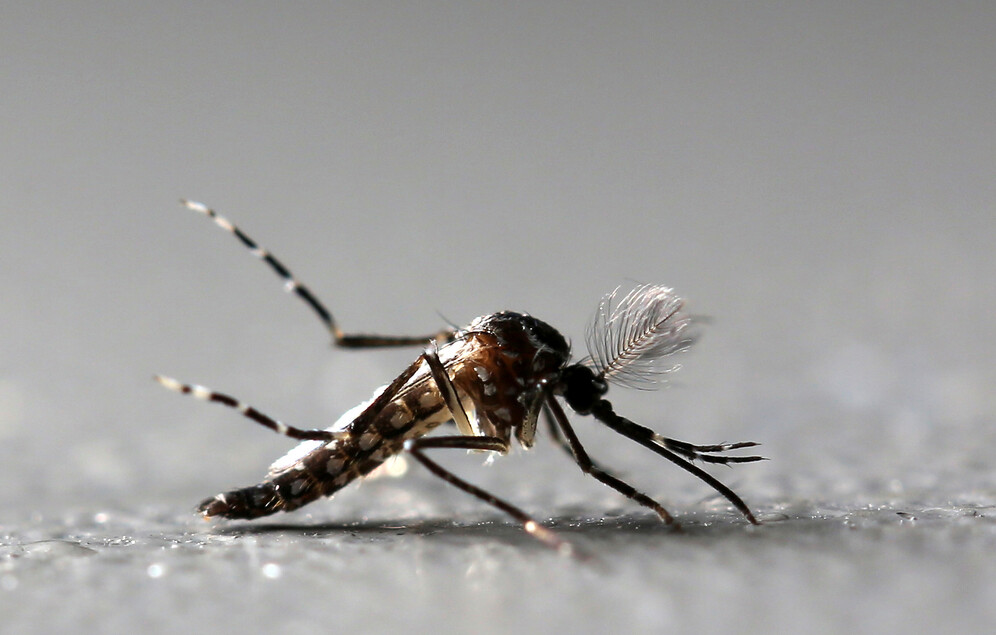
Today one of the most promising mosquito control solutions sparks controversy among environmentalists. Authorities in Florida have approved plans to release 750 million genetically modified mosquitoes into the Florida Keys in 2012 and 2022, despite objections from many locals.
The plan is to release male mosquitoes, designed to pass lethal genes causing the offspring to die in the early stages. The method was pioneered in both the Cayman Islands and Brazil, resulting in an 80% drop in the mosquito population. The idea is questioned by Yale scientists, who studied the ‘friendly’ mosquitoes released in Brazil. They fear a new, more robust type of insects will appear after finding hybrids of those modified and the native mosquitoes.